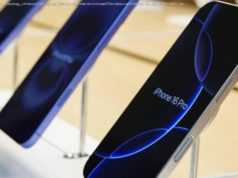For professionals, content creators, and enthusiasts, the iPad Pro and Surface Pro lines are the cream of the crop, the measuring sticks for the rest. Can either one replace your laptop?
With Apple’s announcement of a new iPad Pro, the battle to be the best laptop replacement begins anew. Microsoft only just released the Surface Pro 6, and now these two industry leaders are set to compete for your dollars.
There are, of course, other affordable options, but the iPad Pro and Surface Pro lines are the cream of the crop, the measuring sticks for the rest. For professionals, content creators, and enthusiasts, they are the two main choices to consider for getting real work accomplished.
That said, there are just as many similarities as differences, and it’s still possible to come away thinking they can’t, in fact, replace your laptop. To start, the Surface Pro 6 only comes in one size, 12.3 inches (for a miniature alternative, check out the Surface Go), while the new iPad Pro can be ordered at 11 inches (starting at $799) and 12.9 inches (starting at $999).
From there, each can be configured in several ways. The two trade blows on this front, as the Surface Pro has more options—with some limits. The Surface Pro lets you pick processor and memory in addition to the storage, which is nice for scaling to your needs. But by virtue of having more options, not all combinations of CPUs, memory, and (annoyingly) color options are available with one another.
The iPad Pro also has a slightly fuller range of storage options (64GB SSD up to 1TB SSD while the Surface Pro 6 runs from 128GB SSD to 1TB SSD), and you can mix and match any combination of storage and color. You can also add cellular service to the iPad Pro, which the Surface Pro 6 doesn’t offer (though the similar Surface Pro with LTE Advanced is almost as good).
Comparing sizing isn’t an exact science either—yes, the iPad Pro is thinner and lighter (0.23 inches, 1.4 pounds for the heaviest 12.9-inch with cellular version) than the Surface Pro 6 (0.33 inches, 1.7 pounds)—but the Surface has a built-in kickstand. Since both sell their keyboards separately, you can at least prop the Surface up without any external aid, which is not the case for the iPad.
That inherently makes the Surface more laptop-like, though you can read my Surface Pro 6 review for why the keyboard being sold separately is especially frustrating for the device. In either case, if you intend to use it like a laptop, it’s annoying that they’re not included. The iPad Pro’s Smart Keyboard Folio is $179 for the 11-inch model and $199 for the 12.9-inch model, while the Surface’s Type Cover is $129. The stylus accessories are also sold independently—the Apple Pencil is $129, while the Surface Pen is $99—which may equally bother you as a designer or artist.
One hardware aspect in which the iPad Pro surprisingly beats out the Surface Pro 6 is the inclusion of a USB-C port. Apple has long been hesitant to use industry-standard ports, but the Lightning connector has been dropped for a USB-C port. That way, you can charge and connect a host of peripherals with a non-proprietary cable. It also supports high-bandwidth data transfers and can support external displays up to 5K.
The Surface Pro does have a traditional USB port, which is handy for a mouse or external drive, as well as a mini DisplayPort, but it’s not very forward-thinking to exclude the increasingly standard USB-C port. Of the two companies, the smart money before today would have been on Microsoft to include one and Apple to leave it out, but here we are.
Of course, Apple somewhat throws that advantage out the window with the exclusion of a headphone jack. While arguably not as essential as peripherals for work via USB-C—there are wireless options, after all—it’s frankly pretty irritating for wired headphone owners.
And finally, the elephant in the room: The iPad runs iOS, and the Surface Pro 6 runs Windows. This is almost certainly the deciding factor for many shoppers—the single point on the fact sheet most likely to make you side with one over the other. Some people are willing or able to switch, but many have either no desire or no ability to do their work on the other side.
In this regard, as far as laptop replacements go, I’d give the edge to the Surface Pro. Yes, I’m a Windows guy, but it’s more than just preference here. Apple’s iOS is simply not the same as macOS; it’s a different experience than what you get on your MacBook of choice. Apple is increasingly trying to replicate that experience on iOS as much as possible, but the Surface Pro 6 is running full-on Windows 10, the same as any PC. As PCMag Lead Analyst Sascha Segan writes, iOS does not deliver the same workflow capabilities as a laptop, no matter the laptop-like hardware improvements.
On a related note, we’ll have to see how the iPad Pro’s new A12X chip fares. Apple ensures us it will be very fast, and its microarchitecture is impressive, but we can’t put its speed to the test until we get a unit in for review. Add that to the fact that it’s running a different operating system from the Surface Pro, built to optimize and run different tasks, and it only obfuscates head-to-head rankings further.
The Surface Pro 6 model we tested includes an 8th-Gen Intel Core i5 processor, which is perfectly speedy and likely a bit more capable, but we’ll withhold judgment. Again, the iPad’s speed is not really the issue as far as workflow is concerned; we know Apple’s chipsets are capable of running quickly.
Ultimately, Apple pushes this battle closer than it ever has before. The Surface Pro has long touted itself as the true laptop-replacement tablet, and that’s largely still true among Windows machines (though it has some strong competition). Obviously on the iOS side, there’s only one option—if you’re tied to that ecosystem, the iPad Pro is your answer; iOS is still iOS, however, and an intuitive and empowering multi-tasking interface it is not.






